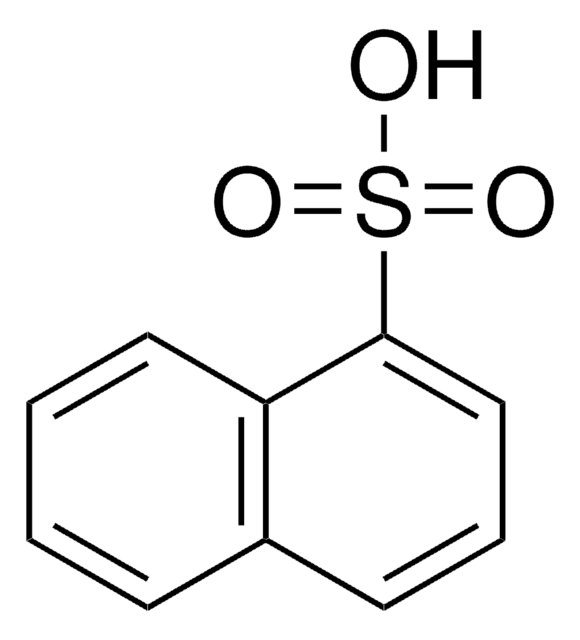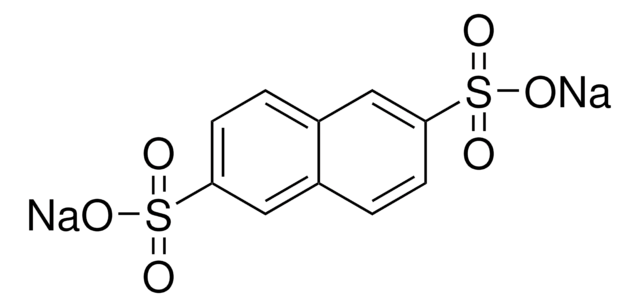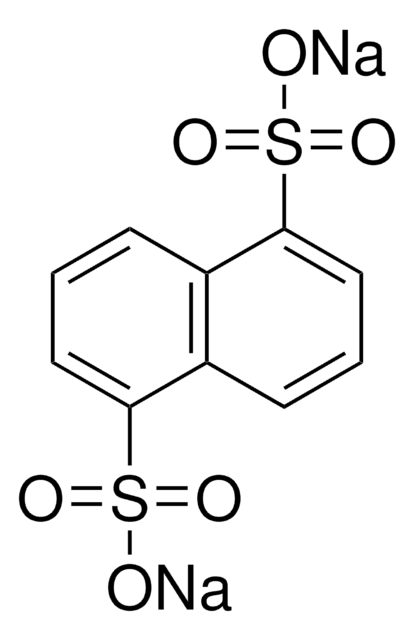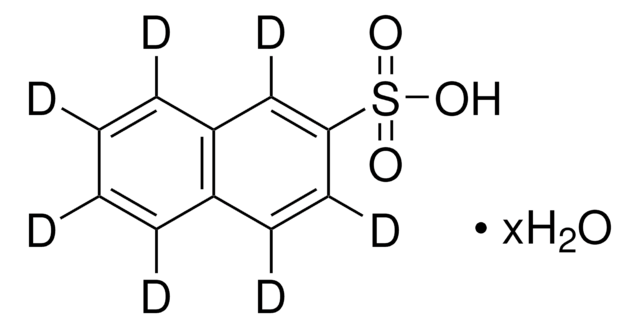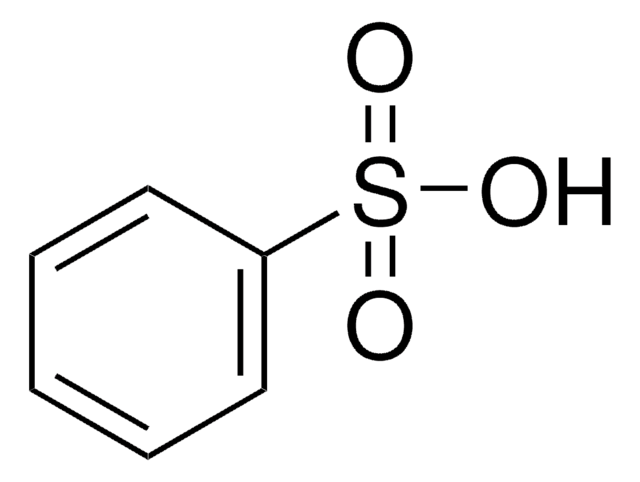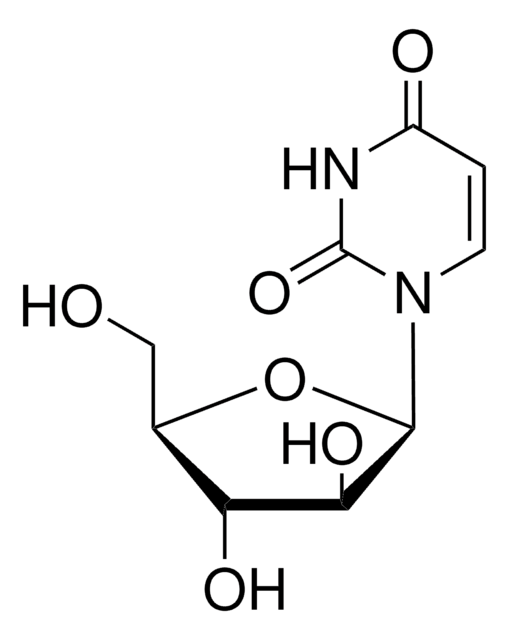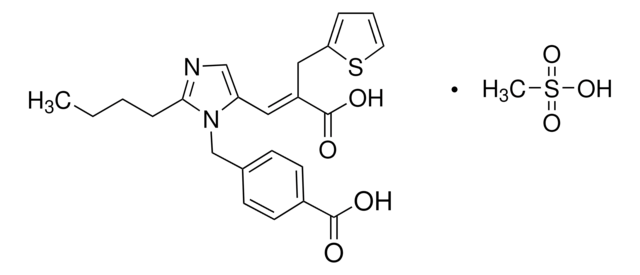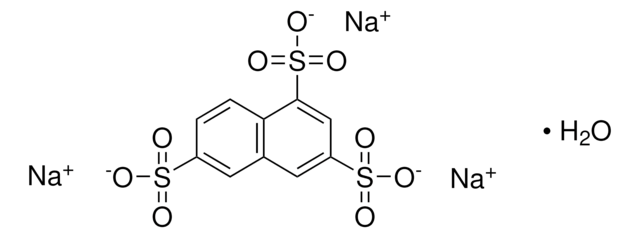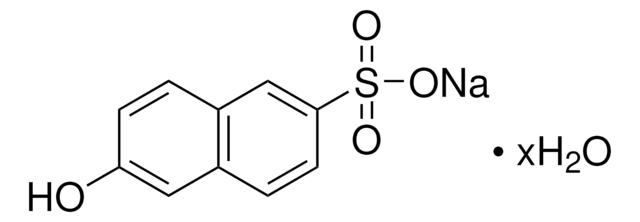249548
2-Naphthalenesulfonic acid
technical grade, 70%
Sinónimos:
β-Naphthalenesulfonic acid, 2-Naphthylsulfonic acid, 2-Sulfonaphthalene
About This Item
Productos recomendados
grade
technical grade
Quality Level
assay
70%
form
solid
solubility
water: freely soluble(lit.)
SMILES string
OS(=O)(=O)c1ccc2ccccc2c1
InChI
1S/C10H8O3S/c11-14(12,13)10-6-5-8-3-1-2-4-9(8)7-10/h1-7H,(H,11,12,13)
InChI key
KVBGVZZKJNLNJU-UHFFFAOYSA-N
Gene Information
human ... EGFR(1956) , LCK(3932)
Categorías relacionadas
General description
Physical properties
signalword
Danger
hcodes
Hazard Classifications
Eye Dam. 1 - Met. Corr. 1 - Skin Corr. 1A
Storage Class
8A - Combustible, corrosive hazardous materials
wgk_germany
WGK 3
flash_point_f
Not applicable
flash_point_c
Not applicable
Certificados de análisis (COA)
Busque Certificados de análisis (COA) introduciendo el número de lote del producto. Los números de lote se encuentran en la etiqueta del producto después de las palabras «Lot» o «Batch»
¿Ya tiene este producto?
Encuentre la documentación para los productos que ha comprado recientemente en la Biblioteca de documentos.
Los clientes también vieron
Nuestro equipo de científicos tiene experiencia en todas las áreas de investigación: Ciencias de la vida, Ciencia de los materiales, Síntesis química, Cromatografía, Analítica y muchas otras.
Póngase en contacto con el Servicio técnico